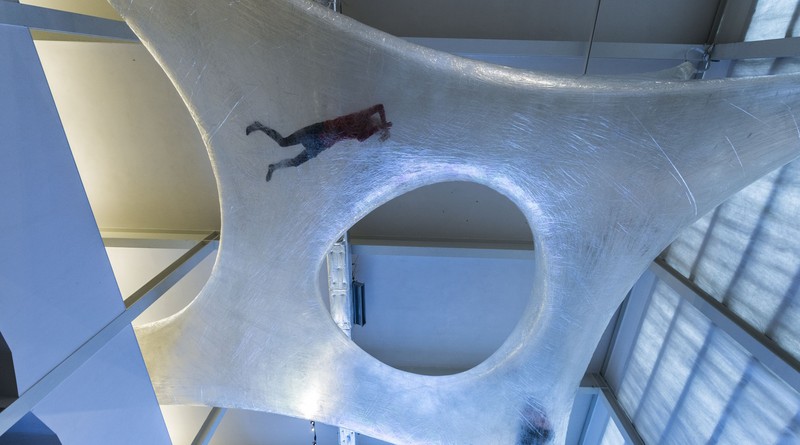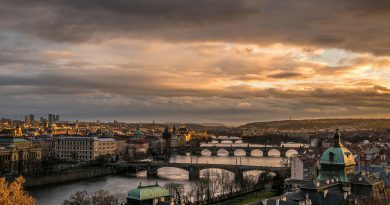Last chance to explore „Brave New World“ at DOX
A comparison of the current social situation with old literary writings which contain various visions of the future. That was the main idea of an extensive exhibition entitled „Brave New World“, on display at the DOX Centre for Contemporary Art until a few days ago. Exploring „Brave New World“ was certainly worth it.
The organizers of the exhibition drew inspiration from dystopian novels by George Orwell („1984“, published 1949), Aldous Huxley („Brave New World“, published 1932) and Ray Bradbury („Fahrenheit 451“, published 1953). Visions of the future which appeared in these novels were compared to today´s reality. It should be noted that some of the similarities are frighteningly accurate. For example, Huxley´s warning about the threat of the hegemony of manipulating technology seems to be more topical than ever before.
The introductory part of the exhibition was called „Life in a Cage“ and was inspired by Orwell´s novel – it is a dismal image of life in a dictatorship. Four three-meter-tall metal statues of the most infamous dictators (Stalin, Lenin, Hitler and Mao Tse-tung) suggested four totalitarian regimes of the 20th century. At the same time, they reminded us that there are still many countries where dictatorships are everyday reality.
The second part of the exhibition, called “Freedom in a Bubble”, was devoted to the inherent danger of voluntary slavery, which Huxley and Bradbury had been pointing out. In the contemporary society, a new tyranny is setting in. It works with the illusion of choice and freedom and is implemented with our consent. For example, we can think of the systematic monitoring of citizens in both the physical and virtual world, the mechanisms of the consumer market, but also some elements of the media system (such as advertisement).
The choice for mankind lies between freedom and happiness, and for the great bulk of mankind, happiness is better. (George Orwell)
The third part of the exhibition dealt with the invisible category of „renegades“ – people who are not capable of adapting to their roles in our modern society and, therefore, become „patients“. One component of this exposition entitled „Detachment“ referred to the contemporary Japanese phenomenon of hikikomori. This term is used for people who isolate themselves from the majority society because they are incapable of operating in it. More than one million of such people live in Japan, and it is obvious that similar cases also exist in other parts of the world. A video from an accompanying discussion on the issue of hikikomori, which took place at the DOX in December, is available here.
The final part of the exhibition, called „Absolute Happiness“, symbolized a predestination center from Aldous Huxley´s novel „Brave New World“. Huxley described this center as the place where the quantity and quality of the human population are scientifically managed. Thus, Huxley warned about the pseudo-scientific social engineers.
The exhibition also included a monumental site-specific installation by the NUMEN/FOR USE group. It was a network of tunnels made from transparent adhesive tape, which was hung six meters above the ground. It represented the life in a bubble and the labyrinth of dead ends of the contemporary society.
Undoubtedly, “Brave New World” was an exhibition that made visitors think about our society and its hidden problems. The main idea, omnipresent throughout the exposition, will stay in our minds for a long time.
Text vznikl v rámci předmětu Angličtina pro žurnalisty pod vedením Mgr. Aleny Proškové.




